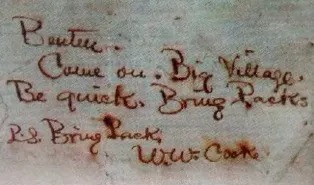Since last writing, I turned 80 years old. I’m not sure how that’s best placed in perspective, but it’s so old that if I’d get into a traffic mishap the news reporter would refer to me an elderly victim, a reference which would really rankle me, by the way.
There was no choice about turning 80, but I’m glad I did since many don’t. Aft
er thinking about it, one choice for aging does exist, though. The song “Old Hippie” by the Bellamy Brothers expresses it very well. “Should he hang on to the old. Should he grab on to the new.” How will the time remaining be spent? Will it be useful?
The Bellamys end their song with “He’s just trying real hard to adjust.” Adjust I have. There’s been cancer where the surgeon left a hole requiring plastic surgery to cover it. There was another cancer where the prostate gland was removed. There was cataract surgery to clear up those cloudy views, and there was a handicapping injury in my youth. In order to deal and cope with this life, I’ve adopted a word for my mantra - “Onward!” It works better for the psyche than remembering with regret those past acts of omission and commission.
A many times quoted adage from the gonzo writer Hunter Thompson fits the bill. “Life should not be a journey to the grave with the intention of arriving safely in a pretty and well preserved body, but rather to skid in broadside in a cloud of smoke, thoroughly used up, totally worn out, and loudly proclaiming Wow! What a Ride!”
The mantra “Onward!” for me means making plans for the future as if little or nothing has changed. We will attend the 36th annual Dakota Cowboy Poetry Gathering in Medora over the Memorial Day weekend. This is a grand affair, a two-day event featuring both poetry and music. It makes my wife shudder to think she will have to bear with me on stage, but that is what I’m going to do.
Performing an original piece of poetry in Medora is on my “Bucket List,” although we have attended and done so a couple of times before. I still feel a strong attachment to the topic of horses during World War I and am presently writing the long poem about them. Maybe it’s bad poetry what with its rhyming couplet scheme and all, but I hope it meets with positive regard.
The poem moves from the general to the specific and begins by referring to the huge battlefield slaughter of horses. Here is the way it begins: I’ve got this sad tale to tell/ one without parallel./ It’s one I’d like to renew/ a memory held now by so few…
European farmers could not supply enough replacements to satisfy army needs and purchase agents ranged across the United States buying and shipping boatloads of horses to the battlefields. But it wasn’t a “gate run” proposition since an inspection of the animals had to take place. Injured, diseased, or untamable animals were rejected. So it was when one horse deemed too wild to be useful was turned back out to pasture. His owners made him a rodeo horse. His name was Tipperary.
Some years back, in 2011 to be exact, Sheila Schafer bought and gave me the gift of a book titled Tipperary: The Diary of a Bucking Horse 1905-1932. She and I were members of a study group at Bismarck State College, and I had made some mention of the horse matter during this historical period. Grand old lady that she was, here comes the book in the mail complete with her inscription. She’d found it at the Western Bookstore in Medora. The story of this horse becomes the “specific” in my poem.
Plans for the future also include attendance at the Western Writers of America annual convention in Great Falls, Montana. Hopefully Covid concerns won’t cancel the affair like it did last year. The following year that convention will be held in Rapid City, South Dakota. In anticipation of that meeting that I’ve proposed a couple articles for publication in our magazine “Roundup.” The editor accepted both topics and therein lies my mantra of planning for the future.
One story will feature that very horse Tipperary. I thought of it when last passing through Buffalo, South Dakota and saw the large statue of him in a city park. South Dakota history claims the horse as theirs. So with a convention in Rapid City, it should be appropriate. The other story for publication will carry the title “Dakota Territory: A Difficult Birth.” The facts and feelings surrounding the formation of our territorial government appeal to me and I’ve done quite a bit of work on that project already.
There will be other plans made for the future. Making them gives one a reason to get up in the morning. My wife asked me what I’d like for my birthday. I have no needs, so I simply said, “A nice cake.”















